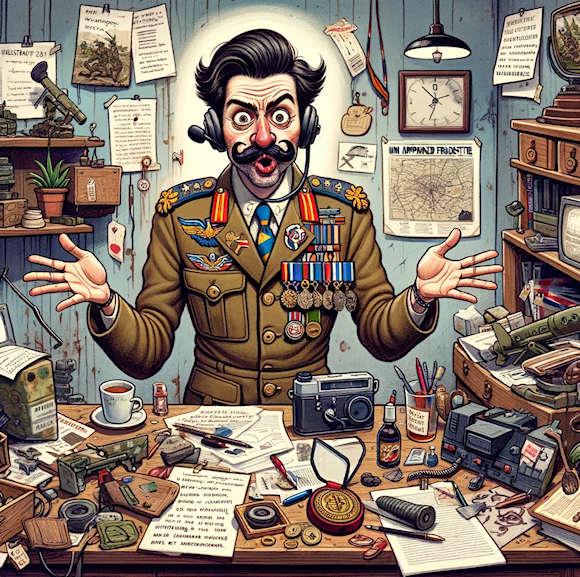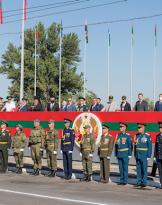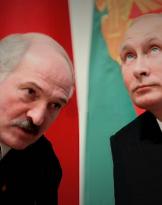Born in the midst of the Cold War, James Bond has often been considered the typical secret agent, the spy who managed to obtain the information necessary to defeat any threat against his country. However, as many as 14 original novels, 9 short stories, 40 continuation novels, 10 Young Bond novels and 25 films (to date), have only partially conveyed some aspects of the struggle between the two superpowers during the Cold War. As the national news of recent years and the condemnations of recent days teach us, in fact, the attempt to steal information from the adversary has never ceased, but also to manipulate them, both to prepare for a possible military response and to try to influence the decision-making process of potential adversaries (read article "Intelligence and decision making")
The second aspect, much more complex than one might believe, is taking on ever greater importance, especially in times of globalized information (social medium, internet, etc...).
In this context, the emergencies we have experienced and are experiencing, from Covid to the wars in Ukraine, the Middle East or the Red Sea, have led to an increase in fake news so much so that, as underlined by a Censis-Ital report Communications of 2022, in the period examined 83,4% of Italians have come across fake news on the pandemic at least once and 66,1% on the war in Ukraine. Nothing is random, it responds to a precise strategy.
We therefore continue our discussion on information warfare, after having previously analyzed the "war" use of propaganda (read the article "War and propaganda”) and the use of disinformation to justify aggression, divide the international community or to mobilize domestic public opinion when engaged in war.
War is no longer just hybrid, but cognitive. At a tactical level, war on the ground, in fact, concerns bombs, cannons, mortars, ships, planes and the ability to erode enemy space. But, as we well know, war is not just a question of tactics, it is also a question of perception. The public's perception of who the victim is and who the aggressor is. In this context, communication represents a fundamental axis of cognitive warfare and lies, falsehoods and disinformation play a key role in modern conflict.
The information war
Information warfare comes into play before the guns are heard, with the attempt to shape perceptions, using every means necessary to try to prepare public opinion (its own and others), generating confusion about the real roles and interests in game. After the start of hostilities, the information war continues its work, with the attempt to erode the support of others and attract international public opinion to its cause.
A war that therefore develops on multiple fronts. We have seen this in the past and we see it every day both in the conflict in the Middle East and in Ukraine, where the aggressors are the most active spreaders of fake news, in an attempt to further their cause and divert attention from their real responsibilities. In this context, they are entered into the information circuit even images of previous conflicts passed off as current or even material from very realistic video games, because readers are usually less critical of images or videos, rarely questioning them. A lot of material that fuels disinformation campaigns that are unprecedented, given the speed of diffusion.
The prevalence of false information and, in general, the lack of consensus on shared facts is characteristic of what RAND calls “Truth Decay.” Various people participate in this mechanism, intentionally or unintentionally supporters who, being highly biased, will like and share content online consequentially. Even if sometimes, following protests or clarifications, the content fake is corrected or removed, the problem remains. How many were influenced after reading the fake news? How many then read the possible denial?
And here comes another discussion, psychological warfare. It is a form of warfare as old as man and is intimately connected to communication. In peacetime, psychological war is a war that is fought with activities that can be grouped under the name of "subversive propaganda", a subtle threat to the internal security of nations, intimately connected to the spread of false or, in any case, artfully manipulated news. A form of "information" that the adversary directs above all towards those who are particularly susceptible to influence. And this is where thean influencer, which fuels aversion to certain choices and favors consensus towards other preferences, which more correspond to one's geopolitical objectives.
With globalized information, able to be delivered to the recipient almost in real time and on multiple platforms, the panorama of possible propaganda "transmitters" has also expanded. THE social networks they have, in fact, transformed themselves into atomizers of news, capable of allowing the dissemination of information in a very short time, making it quickly go viral.
Let us therefore analyze the role of an influencer in the dissemination of "oriented" information, i.e. false and manipulated news which has the aim of providing a vision of reality adapted to the needs of the official narrative.
Influencers e storytelling
- an influencer they are relatively new figures who have risen to prominence in the digital age. In short, these are people, even non-professionals in the sector, who create content with the main purpose of entertaining their followers.
The categories of an influencer they are many and vary across countless sectors, from fashion to technology, to literature, to politics. Alongside the an influencer more "classic" and which mainly have a "commercial" purpose (the promotion and sale of products) there is, however, a vast array of subjects whose contents aim to radicalize or convey specific disinformation messages. Such are the an influencer which deal with conflict-related issues, as in the case of the war in Ukraine. They artfully spread false information, or information manipulated to appear true, in order to feed the official narrative of each party. What is known as storytelling, a style of narration that has been raging in communication for years, especially since the use of social media.
Pleasant and engaging, this narrative tends to illustrate a virtual reality that deviates from factual reality, providing short, approximate, appropriately imprecise information, often with deliberately distorted and ideological readings of history, aimed at supporting convenient versions, which aim to guide behaviors and choices. Through such distorted versions of facts, a breach is opened in the emotionality of those who listen or read and this makes them receptive to the "hidden" message, which seeks to manipulate the individual's perception.
The fairy tales of storytelling, however, even if packaged to be convincing, will never be sufficient to describe the facts. Telling a story (according to facts) is, in fact, different from telling stories (according to ideology). A small site, for example, which promised to present itself as an authoritative source for the dissemination of selected main news from the international press online, relaunched false news packaged to put the attacked in a bad light and to attract sympathy towards the attacker. The even more serious thing is that the site manager, once faced with the evidence, did not understand the political implications of what he had relaunched. Naivety or awareness?
This proves that you don't need to be a an influencer by millions followers to fill a role in the storytelling. Adversaries, including both states, criminal organizations and extremist groups, often exploit the micro and nano network an influencer to guide the debate and the decision-making process, through the conveyance of a message that is only apparently authentic.
Who are the micro or nano an influencer? They are simply characters who, by virtue of the small number of follower (we are talking about the order of a few hundred, up to a maximum of 10 thousand), they manage to establish a closer, more engaging and "familiar" relationship with their audience. By virtue of the relationship of "trust" they generate in their followers, they represent a means through which to convey politically aligned or disinformation messages.
In a report drawn up at the end of research on Social Media Influencers and the 2020 US Election: Paying “Regular People” for Digital Campaign Communication, hosted by Samuel Wooley1, from the University of Texas, it is stated that unlike the account of celebrities, the micro and nano influencer they are normal individuals, whose main occupations are not doing things an influencer, but rather be active members of their local communities, who have connections with their own follower offline. Such could have been, for example, that entrepreneur who in September 2022 vigorously claimed to have seen numerous very modern Russian tanks concentrating on the borders with Ukraine, ready to crush any resistance from Kiev shortly thereafter. The same person also believed that Russia was capable of building, despite heavy international sanctions, thousands of modern tanks per month (sic!). All this without having (or providing) reliable data in hand and without knowing what he was talking about.
History tells us that those hallucinations were probably the result of an attempt to influence public opinion in favor of the war of aggression waged by Russia. At best, those lies were the tip of the iceberg of immeasurable ignorance and inability to analyze geopolitical and military data. In short, a scoundrel who wanted to do theinfluencer and which, despite everything, made several unwary people "take the bait".
By leveraging the presumed "authenticity" of these individuals, political disinformation therefore carries out mass orientation operations, trying to influence the public's decision-making processes target and to manipulate the debate. In essence, a distributed information flow is set in motion, managed by subjects deemed "reliable" by users, but extremely treacherous, who manage to evade the content control systems of the same platforms used to convey the information. Such false or manipulated news is then shared by the most unwary users (or associates), exponentially increasing the level of confusion and misinformation.
In this context, even a seemingly innocuous post can hide the real objective of transferring the feeling of trust of follower towards thean influencer in the feeling of devotion towards a cause, whatever it may be.
The search for the right character
Paraphrasing a famous saying, it can be said that thean influencer he has been among us, always. What changes are the means with which he operates, but the well poisoner has always nestled well within the society targeted by disinformation. He can take the form of an actor, a journalist, an entrepreneur, but he can also be a complete stranger who initially stands out by saying or writing things that many like to hear or read.
Often these individuals use their ability to make public opinion listen, spreading incorrect information that paints a virtual reality, which by definition is different from factual reality. For these reasons it is about subjects highly appreciated by the services of the countries that want to accredit a narrative of convenience.
These individuals can agree to spread fake news for four main reasons:
-
by ideology. L'an influencer ideological believes that the aggressor's cause is more just than that of the attacked, but also for other reasons that he considers good and moral;
-
out of ignorance. L'an influencer unaware is the one who relaunches a certain narrative without realizing it or without understanding the profound implications of the manipulated information he is spreading. He is a character who spreads fake news based only on the trust placed in your network of contacts, without carrying out further checks. In essence, together with thean influencer ideological is part of a group of "useful idiots", a definition that seems to have been coined by Lenin, to describe those Westerners who supported the Soviet Union and its policies in the West (sic!); (read article “Disinformatia and useful idiots")
-
for personal gain. L'an influencer mercenary works only for financial gain. Many an influencer politicians or "disinformers", in fact, do not reveal that they have been paid for the creation of a certain content, and the payment often takes place in an occult manner and means;
-
because forced. L'an influencer forced is a flexible propaganda tool because it is morally, economically or legally compromised and, therefore, blackmailable.
Of all these characters, the most difficult to unmask is thean influencer ideological, especially if his conversion to the aggressor's cause occurred after he had reached a significant number of follower. A conversion that is difficult to unmask also because there is normally no remuneration for the service rendered, which avoids the danger of attracting attention with expenses that go beyond one's official possibilities. L'an influencer ideological works to change the social system in which he lives, because he is convinced that it is wrong and that another system, perhaps based on the presidency for life or on a radical interpretation of religion, can allow him to live better. He is convinced that the system in which he finds plots to subjugate other peoples and that, by helping other ideologies to assert themselves, can defeat this attempt.
Destabilization professionals are always looking for an influencer let them play their game. They try and try again incessantly, often making the personal relationship appear casual or tied to particular passions or interests. The "target" subject of these attempts is often convinced that the interest in himself is generated by his intellectual, managerial or managerial abilities, by his fascinating personality. Nothing could be further from the truth.
These initial contacts are then explored in depth with the most varied excuses, such as small paid services or invitations to events where the ideological permeability of the subject in question is verified. If he is recruitable, a network is slowly built around him with the aim of trapping him and making him work for their own purposes.
Finally, the influencers are carefully selected based on target of reference (young or adult) and the style with which they relate to their own follower.
Conclusions
The activity of manipulating lives and choices, invented out of nothing, has now become a symbol of prestige and a declaration of success, despite the fact that they clearly represent a threat to transparency, accountability and the quality of information. It is terrible that millions of people follow the messages sent by these new, terrifying masters, who push their own follower towards "choices" guided by their own political interests. With those click their poor disciples are satisfied, while the narrators get fat, playing on the existence of others. From the follower behind such behavior there is often a crass ignorance, a substantial lack of any critical spirit, a chilling mental aridity.
As Aldo Grasso states “…The flow of the internet has magnified the phenomenon of influencers, so much so as to create a sort of collective credulity. People who let themselves be influenced by a video, by the relief of not having to choose. There is no longer any cognitive mediation. Despite the culture of the Enlightenment, compulsory schooling, the media and social media, they have veered towards linguistic impoverishment (syntactic fragility and low lexical profile) which now prevents us from dealing with complexity..."2, in particular the geopolitical one (nda).
What can be done? First of all, it is good to be aware that when you access sources of information you can be deceived. The fake news they are, in fact, a real counterfeit of news, from the manipulative distortion of facts to total disinformation. Being clear that the problem exists is already a first step towards an effective defense against the spread of false or manipulated news.
We must be aware that on social media, as on TV or in print, we can find people who want to deceive us and even speakers invited to television programs can "sell" manipulated products. We have seen a number of them on television. Controversy often raises theaudience, but it kills correct information.
To protect ourselves, the watchword must be “verify”. Verification of the veracity of the information, in English fact checking, and the validity of the sources from which they are found must not give way to passive acceptance of the news. We therefore check that what we are reading or listening to comes from a reliable source... and then we still look for confirmation from other reliable sources.
Basically, the The best antidote is to get informed, delve deeper into the topics and… think critically. The best recommendation for those (the vast majority) watching from the sidelines is to be careful about what you read and what you share. An intelligent reader/listener always verifies information with other reliable sources, doubts analyzes that are not supported by objective data, is wary of emotionally charged content or overly dramatic titles, and thinks carefully before sharing content. To verify the correctness of the information it is necessary not to be naive and not take everything as true at first glance. In essence, evaluate through intellectual integrity, common sense, knowledge and critical thinking. In the absence of this, thean influencer it will be able to penetrate our defenses and achieve the goal of manipulating reality, modifying our perception of events.
The serious analyst, however, is the antithesis ofan influencer, its negation, the most absolute opposite. The serious analyst must not influence anyone, he must not persuade or convince, if anything he must recognise, understand, evaluate, tell and clarify. Not that simple, if you think about it. If he then knows how to dress up his explanations with passionate and true words, it will go very well, he will stimulate curiosity and the desire for in-depth analysis and critical reflection. This too is his job. A profession reserved for enthusiasts and which requires knowledge, application, work and constant practice. Even without follower.
It is therefore essential for users to learn how to eliminate falsehoods and collect cold, pure facts. Lies and false accusations will only grow in the future as geopolitical competition progresses and will certainly seek to obscure the true motivations of conflicts and their true costs.
The truth is the first casualty of war, while lies, falsehoods and misinformation they are now a fundamental part of the struggle, tools used by an influencer cynical and unrestrained. Learning to recognize these elements means being able to cut the strings of those who want us to be passive puppets and begin to understand how to make conscious choices.
1 Aassistant professor of journalism and project director for propaganda research at the Center for Media Engagement (CME)
2 Corriere della sera, 24 December 2023












